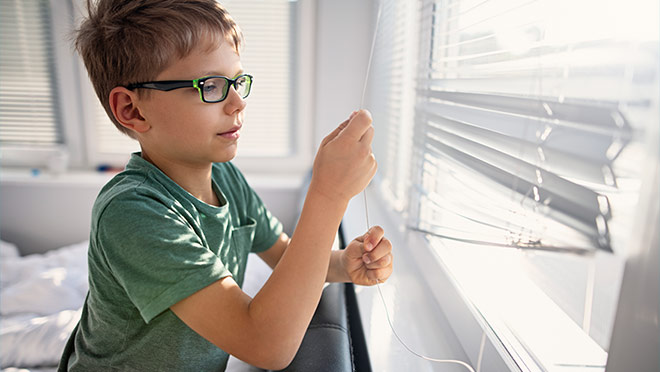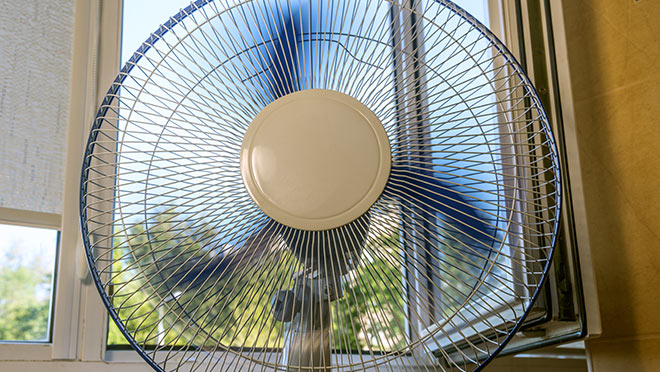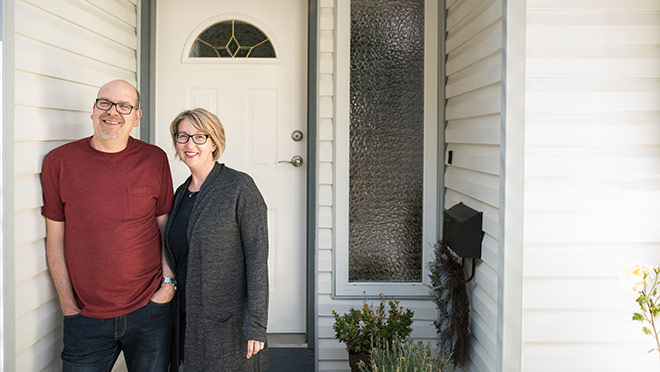10 things you need to know about home comfort

Tips and insights from the guy who wrote a book on thermal comfort
It's the middle of January and, even as your heating bill soars, you can't quite figure it out: Your thermostat reads 21°C, but your partner can feel the chill of your hand through her clothes as you watch TV from the sofa. You reach for a blanket.
Robert Bean is not surprised.
"Thermal comfort is really the result of a recipe of 11 ingredients, and temperature is just one," says Bean, director of healthyheating.com and one of Canada's leading authorities on the design of indoor environments. "Using the thermostat reading, as a proxy for thermal comfort is like calling baking soda a cake."
Bean has just written a book on home design that he hopes will strike a chord with Canadian builders and contractors and lead to homes better designed for comfort and efficiency. For our purposes, he has toned down the technical details in favour of delivering tips you can use at home, divided roughly into three types of action:
- Changing the way you live inside your home
- Upgrades and fixes you may be able to do yourself
- Renovations and upgrades that may require the help of a contractor.
Read the advice below and get going on upgrades to your home. And if you're up to a more technical discussion, or you're a builder or home designer seeking expertise on thermal comfort, don't miss BC Housing's May 20, 2020 webinar, hosted by Bean, titled Building smart – delivering thermal comfort in residential buildings.
1. Understand how you experience discomfort
"It's the loss of body heat that causes the cooling discomfort," says Bean. "And it's the retention of body heat that causes the heating discomfort."
Thermostats don't sense what people sense in a space, so the temperature they display isn't an accurate barometer of comfort. "When you're in a space and you're feeling cold, that cooling sensation is, in a large part, the result of the inside surfaces of your home being cool," says Bean. "And glass is the No. 1 culprit. If there was a criminal charge that could be placed against anything in architecture, it would be against too much glass, because glass is a low performer."
"If you stand in front of a window in the winter time, you'll feel energy leaving your body," he says. "You'll feel cool. Your body is warm and radiates heat to the cold glass. Your body is almost trying to warm up the glass."
In the summer the situation reverses. Heat radiates from the warmer window to your body, which causes you to overheat.
2. Find out what the problems are
Grab a note pad and paper, and sit in several places in your home, with your eyes closed.
"Write down the things in your environment that you want to change," he says. "You close your eyes because vision can overpower all the other sensory systems. Let those other systems kick in. What are you feeling, hearing, or smelling? Then take steps to take any discomfort out of your environment."
If, while sitting there, you feel drafts at your feet, consider using a heat detector you can buy from your local hardware store to check along exterior walls, sinks, windows, doors, chimneys, plumbing, electrical outlets and even the tub, for drops in temperature of 5°C or more. You can even use a candle, turning off all fans in the home and closing all doors and windows before checking to see where smoke from the candle will either be pushed or pulled by a leak around a window, door, exterior wall or outlet.
According to ENERGY STAR®, drafts in your home can increase your heating bills by 20%. And your comfort may suffer even more. The City of Vancouver has an excellent checklist of what to do for your do-it-yourself home energy audit [PDF].
3. Consider paying for a blower door test and thermographic imaging
If you really want to find out what's going on in your home's envelope, hire someone to come out to do a blower door test and to use a thermographic camera to do an energy audit on the home. "Find out where the building's leaking, where the insulation flaws are – and when you know that, you can look at your budget to determine where you can get your biggest bang for the buck," says Bean.
Call a CleanBC energy coach for a free consultation and information on where to get a home energy audit in your area.
4. Start with one room where you spend most of your time
If you have a limited budget or want to start small, concentrate on a room or a couple rooms.
"Maybe it's not about solving the whole home issues, but the areas you occupy the most," says Bean. "Who cares if part of the house is cold if you're not using it? Look at the socializing areas of the house, the kitchen, dining room, living room. And fix those walls and windows first."
Also consider moving furniture around. If you have a big window that causes discomfort, you may want to ensure your chairs or sofa aren't close to it. That's difficult in smaller homes, but moving your living space closer to the centre of the room can help.
5. Consider area rugs over carpeting
Warmer feet can have a positive effect on your comfort in the cooler months, and if you don't have heated floors, it can be a challenge to keep your feet warm, especially if you have wood, concrete, tile or other non-carpet flooring in your home. Start by ensuring you're all wearing thick socks or slippers on cooler days, but if you're thinking about adding carpeting to rooms, you may want to reconsider. Carpets reduce thermal discomfort, but they can also introduce hygiene risks with chemicals off-gassing into the air, allowing dust and allergens to collect, and creating a place for mould and mildew to grow.
An area rug in a living room or kitchen, perhaps used seasonally, is a lower-cost and more hygienic alternative. If you're determined to get carpeting, look for natural fibres and underlays that with low chemical emissions.
6. Draftproof, as it's the easiest DIY upgrade
Once you've determined where your drafts are coming from, use weatherstripping and caulking to try to minimize those leaks. Watch for specials on draftproofing products at BC Hydro partner retailers, and check out our how-to videos on powersmart.ca.
7. Go old-school with awnings or shutters
Window treatments such as blinds can help reduce discomfort in summer, but the better option is to keep heat from entering the home in the first place.
"When it's sunny outside, as soon as heat enters the building, it's a cooling load," says Bean. "And it doesn't matter if it's on one side of the interior blinds or the other – it's still going to cause an overheating problem. So control that solar gain on the outside, with awnings or shutters, which are a low-cost effective way of improving thermal comfort."
Make sure the shutters you use are compatible with your windows. And if you're in a condo complex with restrictions on adding exterior awnings or roller shades, push the strata council to relax those restrictions. "If you're in an apartment with a balcony, consider hanging an external roll-up blind," he says.
If you're in a detached home, consider bushes or trees on the south and/or west side of your home where there are big windows. A deciduous shade tree blocks sunlight from hammering your home in summer, but in the fall, drops its leaves to provide the sunlight you want in the cooler months. "If you add shrubbery or a tree for shading, keep it away from the foundation of the house," cautions Bean. "It's important to keep the watering of the plant away from the foundation. And things like rats and mice and bugs hide there for shelter, so you don't want that near your foundation."
8. Resist the temptation to add air conditioning
Strategic use of awnings and blinds, plus air flow through the home, can go a long way to reduce the worst effects of summer heat. On hot days, rise early enough to close windows and blinds to insulate against the heat of the day from entering your home. But in the evening as soon as the outside air is cooler than the air inside your home, open windows and screened doors to allow that cooler air to flow through your home, pushing out the warmer air. Enhance that flow by opening windows on the upper and lower floors. When the heat builds inside the home, use floor, desk or ceiling fans to help keep you cool, but shut them off when there's no one in the room.
9. Going big? Take advantage of home renovation rebates
As you weigh upgrades to your home, keep in mind that BC Hydro's home renovation rebates offer the potential of thousands of dollars in savings on windows, doors, insulation, space heating and water heating. Learn how attic insulation upgrades have paid off in B.C. homes,
10. Plan for the long term
If you're weighing the cost-benefit of a major upgrade such as windows or insulation, the energy savings may not pay back in the short term. However, the short-term gain in comfort, and the longer-term energy savings – particularly if you plan on staying in your home for a decade or more – could convince you.
Bean also emphasizes that as we get older, physical challenges factor in.
"As a large part of our population ages, many also have physical challenges such as Parkinsons and arthritis, and our ability to adapt is reduced," he says. "It becomes more difficult to pull on a sweater, or for that matter, to open or close a window."
Think about the concept of aging in place, and upgrade your home in accordance with that long-term strategy.




